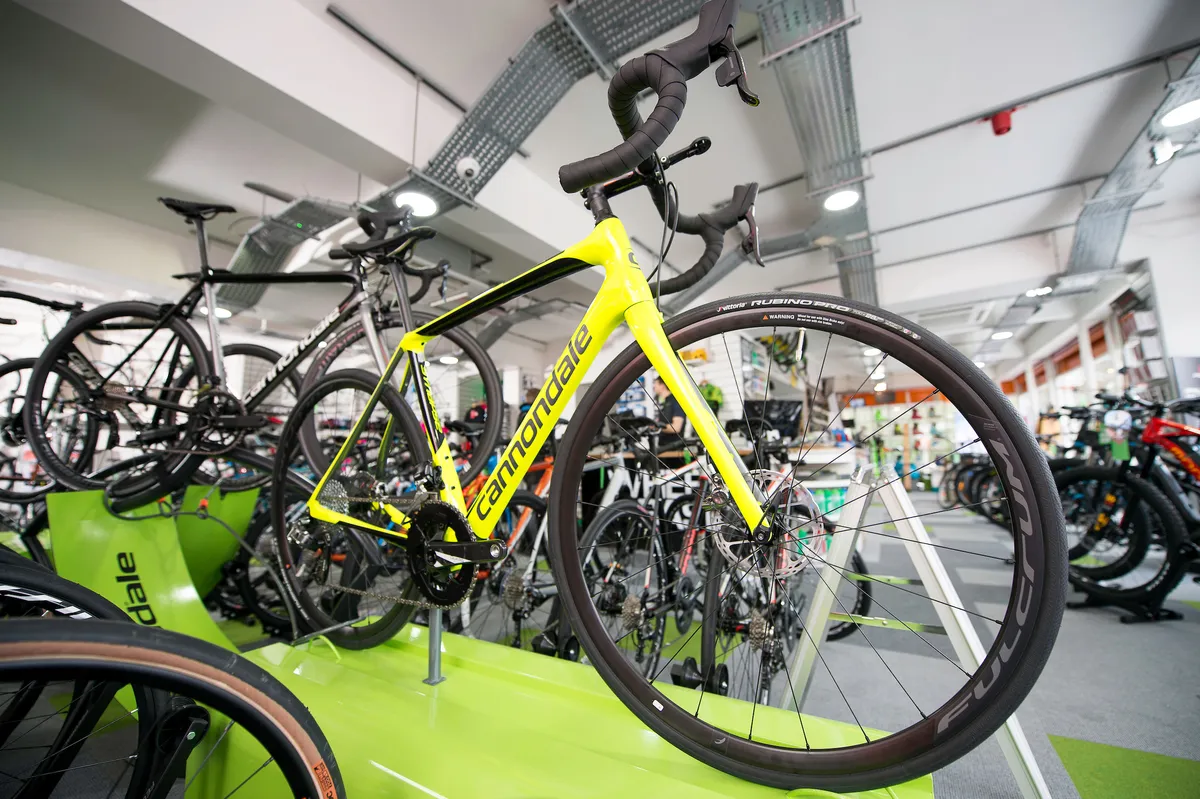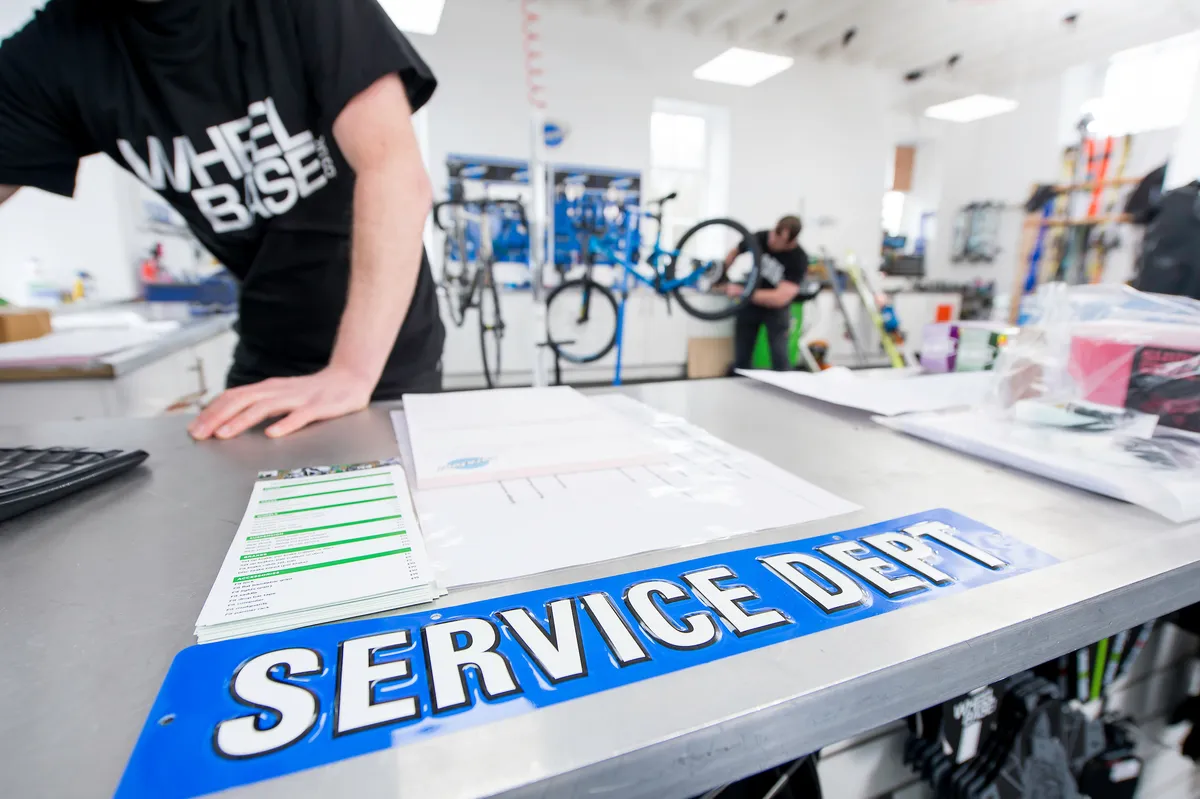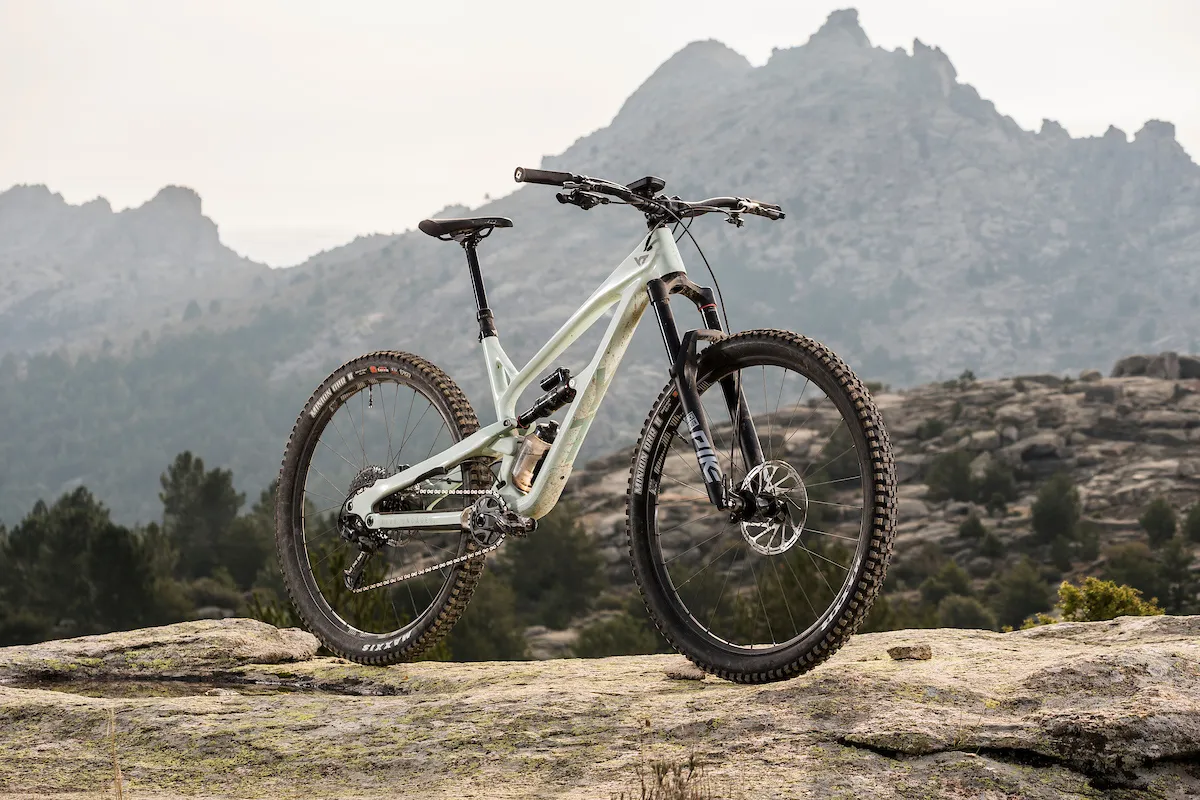When buying a bike, in addition to figuring out what type of bike you want, there's also the question of whether you buy from a bike shop or online.
Back in the day, you simply went to a bike shop, tried out a couple bikes and off you went. But in the mid-90s, everything started getting shaken up by this confusing, maybe-too-good-to-be-true thing called the internet.
Ever since, buying products online has become an increasingly popular option, whether that's from an online retailer or direct-sales bike brand. It's not hard to see why, with the ease of shopping at home, seemingly lower prices and delivery right to your door.
But what are the pros and cons of buying a bike at your local bike shop versus buying online, and what route should you take?
Buying at the local bike shop – pros and cons

Knowledge and fit are the biggest advantages of buying from an actual, physical shop.
Good bike shops live and breathe bikes so their advice might clue you in on something you didn't know and they can help you make sure the bike's size is correct.
Getting the right bike fit is dependent on a variety of factors: height, flexibility, leg and arm length, riding style, even personal preference. There's little that can compare to actually riding the bike and having a trained eye there to look at you and analyse the bike fit.
Geometry can also vary significantly from one bike to another, which in turn has a knock-on impact on fit and handling, so a good bike shop can help advise on the intricacies of road bike geometry and mountain bike geometry.

Fit extends beyond bikes, too. If you want to try on clothing, helmets or shoes without worrying about a returns policy or having to send kit back in the post, the bike shop is your best bet.
Another benefit to buying from a bricks-and-mortar bike shop is its service department.
Almost all new bikes come with a complimentary tune-up or discounted service. And if anything does happen to fail or go wrong, warranty issues are more easily dealt with by returning to a shop, and can sometimes be handled right there, depending on the part, of course.
Downsides basically centre around having to pay more, at least upfront (we'll get more into that below). As with anything, buying from a shop can come at an additional cost, and bikes and bike components are no different, though some shops may offer a price match service.

Some shops have pivoted to offering services beyond simply buying a bike, including quality coffee, in-depth bike fitting and coaching. Many bike shops also organise group rides or have a club.
Beyond price, the other negative is that, unfortunately, really good bike shops stocked with the inventory you desire can be quite rare, and most bike shops are tied to the brands they specifically stock.
Unfortunately a lot of bike shops are started by people with passion, rather than business savvy, and employee turnover can be high, due to low wages and long hours, too.
However, if your local bike shop is run by passionate, knowledgeable staff, and stocks brands that work for you, then that personal touch can be very valuable as a customer.
Buying online – pros and cons
Buying a bike online can be done in two ways. First, there are manufacturers, such as Canyon, YT and others, that ship bikes straight to customers. Direct-sales brands, as they're known, typically have a team in each country for technical and warranty support.
Then there are online shops with their own bike brands, including Vitus from Chain Reaction Cycles, and Ribble. You'll also find some sites with exclusive deals with certain manufacturers, with those bikes only being available from that retailer (exclusive partnerships).
Whether it's the direct-to-consumer model or an online site blowing out last year's frames, the number-one benefit to buying online is price. Simply put, there are fewer layers to the end purchase, so less margin has to be made. This results in a nicer bike for less money or stretching your budget up a level in components.

Sounds awesome, doesn't it? Well, there are downsides to buying a bike from the comfort of your own home.
Unless you snag a ride on a demo day or have a friend with the bike you want, you're spending a significant amount of money without a test ride. This, of course, can be less of an issue if you know what numbers you need on a geometry chart.
The savings you were so stoked on might not be there in the end, either.
On a basic level, you will have to assemble your bike from the box when it arrives and, if the bike shows up with a kinked cable, the disc brakes need to be bled, or the wheel got tweaked in transit, that's extra time and money to get those issues resolved.

You'll likely have to go to your local bike shop for the parts or the repair, plus, depending on the company and where you live, you might have to pay for shipping if the bike needs to go back to the brand.
The other downside is warranty work. Whereas a local bike shop will often do their best to take care of you (their paying customer), when going direct it's on you to call or email, explain the issues, box and ship the bike or part back, and then wait on the response.
Last but not least, some bike brands just aren't available outside of the bike shop. Also, if you live in an area with only one bike shop and it goes out of business, a last-minute tube or other ride-saving part purchase can't happen immediately online.
There's also the argument about keeping your money in the local cycling community where you live and supporting the business that may help with things like infrastructure campaigning, events and trail building.
So what's better?
It comes down to how experienced you are, whether you know exactly what you want, what brands you're keen on and, ultimately, your budget.
If cycling is new to you, or you don't have a solid, confident grasp of what all those lines and numbers mean on that goofy geometry chart, visit a shop for your new bike.
Online retailers and brands often offer great advice and knowledge, with passionate staff, but the reality is phone calls, emails and Skype chats can't always compare to direct face-to-face communication and butt-on-saddle experience.
On the flip side, if you've been into bikes for a while, know what you want, and have the mechanical know-how to build and fix things, going online might be the right call.
Online pricing is tough to ignore, as is the convenience of having your new bike delivered to your door. Do keep in mind, though, buying online does have its compromises as well.